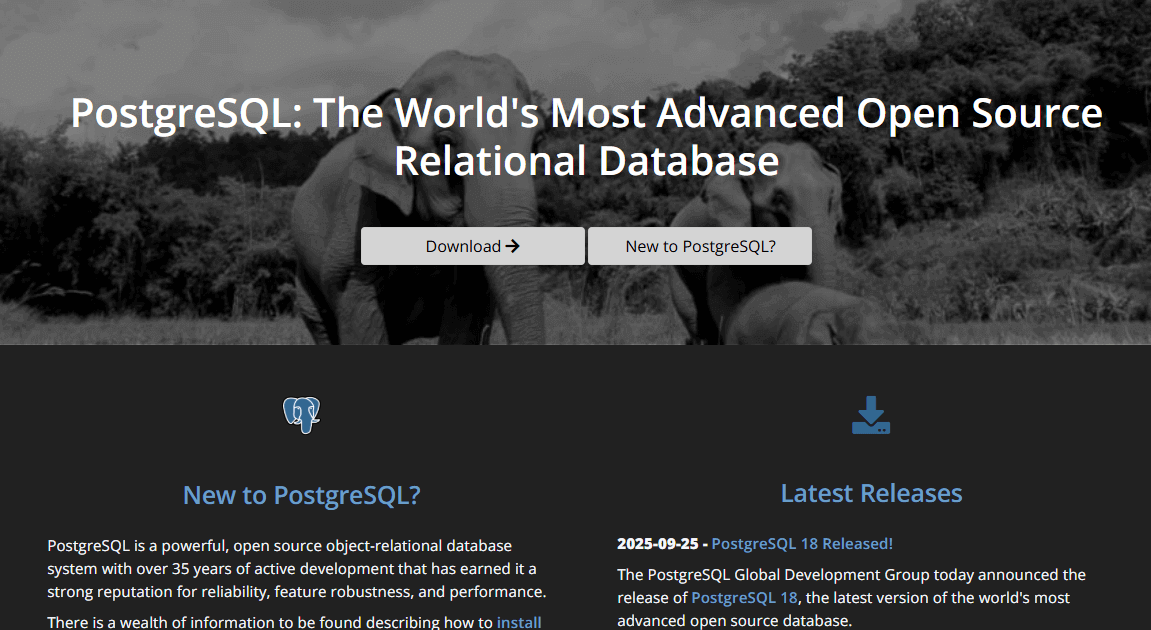Appearance
PostgreSQL
By default, NextSaasPilot uses MongoDB as its database. However, if you prefer PostgreSQL, you can easily switch to it and manage your database with Prisma. This guide explains how to use PostgreSQL with NextSaasPilot.

Quick Start with PostgreSQL Branch
NextSaasPilot provides a dedicated PostgreSQL branch for quick setup. You can checkout this branch to get started with PostgreSQL immediately
1. Update Prisma Schema (prisma/schema.prisma)
Edit your prisma/schema.prisma file so that the datasource provider is set to postgresql. Make sure your models are using types and settings that work well with PostgreSQL.
prisma
datasource db {
provider = "postgresql"
url = env("DATABASE_URL")
}
generator client {
provider = "prisma-client-js"
}
model User {
id String @id @default(uuid())
name String?
email String? @unique
emailVerified DateTime?
password String?
image String?
accounts Account[]
customerId String?
priceId String?
isAdmin Boolean @default(false)
hasAccess Boolean @default(false)
subscribedAt DateTime?
createdAt DateTime @default(now())
updatedAt DateTime @updatedAt
@@map("users")
}
model Account {
id String @id @default(uuid())
userId String
type String
provider String
providerAccountId String
refresh_token String? @db.Text
access_token String? @db.Text
expires_at Int?
token_type String?
scope String?
id_token String? @db.Text
session_state String?
createdAt DateTime @default(now())
updatedAt DateTime @updatedAt
user User @relation(fields: [userId], references: [id], onDelete: Cascade)
@@unique([provider, providerAccountId])
@@map("accounts")
}
model VerificationToken {
id String @id @default(uuid())
identifier String
token String
expires DateTime
@@unique([identifier, token])
@@map("verification_tokens")
}
model PasswordResetToken {
id String @id @default(uuid())
email String
token String @unique
expires DateTime
createdAt DateTime @default(now())
@@map("password_reset_tokens")
}2. Configure Your MongoDB Connection (.env)
Update the
DATABASE_URLin your.envfile to use your PostgreSQL connection string.Replace placeholders with your actual PostgreSQL connection details.
txt
# Example PostgreSQL connection string
DATABASE_URL="postgresql://[USER]:[PASSWORD]@[HOST]:[PORT]/[DATABASE]"
# Example using Supabase
# DATABASE_URL="postgresql://postgres:[YOUR-PASSWORD]@db.[PROJECT-REF].supabase.co:5432/postgres"3. Update package.json file
When moving from MongoDB to PostgreSQL, update your package.json database scripts. The main difference is that you'll use db:migrate instead of db:push to manage schema changes.
json
{
"scripts": {
// ... other scripts
"postinstall": "prisma generate",
"db:migrate": "prisma migrate dev",
"db:reset": "prisma migrate reset",
"db:generate": "prisma generate",
"db:studio": "prisma studio",
"db:deploy": "prisma migrate deploy"
// ... other scripts
}
}Here’s what each command does:
postinstall: Runsprisma generateautomatically after dependencies are installed. This keeps your Prisma Client up to date with changes in your Prisma schema.db:migrate: Runsprisma migrate dev. This is the main command for creating and applying migrations during development; it keeps your database in sync with your defined schema by generating migration files and applying them.db:reset: Runsprisma migrate reset. Completely resets your development database: drops it, runs all migrations from scratch, and optionally runs seeds if configured. Use with caution, as this operation deletes all existing data.db:generate: Runsprisma generate. (You can use this independently to regenerate the Prisma Client code after changes to your schema.)db:studio: Opens Prisma Studio, a web UI for safely viewing and editing your database content.db:deploy: Runsprisma migrate deploy. This command applies all migrations to a production or staging database environment, ensuring that the deployed schema is up to date.
4. Typical PostgreSQL Workflow
- Define Models: Modify your
prisma/schema.prismafile. - Create & Apply Migration: Run
npm run db:migrateto generate and apply a migration. - Develop: Start your application (
npm run dev). - Inspect Data: Use
npm run db:studiofor a GUI view of your database. - Deploy: Run
npm run db:deploy(maps toprisma migrate deploy) during deployment to apply all migrations to your production or staging database.